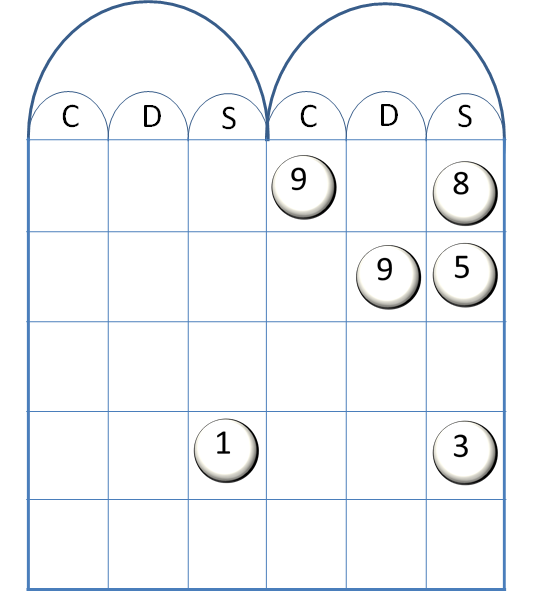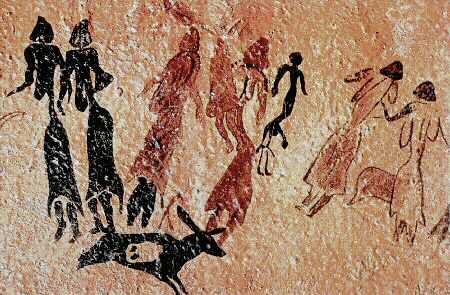|
Pope Silvester II
Pope Sylvester II ( – 12 May 1003), originally known as Gerbert of Aurillac, was a French-born scholar and teacher who served as the bishop of Rome and ruled the Papal States from 999 to his death. He endorsed and promoted study of Arab and Greco-Roman arithmetic, mathematics and astronomy, reintroducing to Europe the abacus and armillary sphere, which had been lost to Latin Europe since the end of the Greco-Roman era. He is said to be the first in Europe to introduce the decimal numeral system using the Hindu-Arabic numeral system. He is credited with the invention of the first mechanical clock in 996. Early life Gerbert was born about 946 in the town of Belliac, near the present-day commune of Saint-Simon, Cantal, France. Around 963, he entered the Monastery of St. Gerald of Aurillac. In 967, Count Borrell II of Barcelona (947–992) visited the monastery, and the abbot asked the count to take Gerbert with him so that the lad could study mathematics in Catalonia and acqu ... [...More Info...] [...Related Items...] OR: [Wikipedia] [Google] [Baidu] |
Bishop Of Rome
A bishop is an ordained clergy member who is entrusted with a position of authority and oversight in a religious institution. In Christianity, bishops are normally responsible for the governance of dioceses. The role or office of bishop is called episcopacy. Organizationally, several Christian denominations utilize ecclesiastical structures that call for the position of bishops, while other denominations have dispensed with this office, seeing it as a symbol of power. Bishops have also exercised political authority. Traditionally, bishops claim apostolic succession, a direct historical lineage dating back to the original Twelve Apostles or Saint Paul. The bishops are by doctrine understood as those who possess the full priesthood given by Jesus Christ, and therefore may ordain other clergy, including other bishops. A person ordained as a deacon, priest (i.e. presbyter), and then bishop is understood to hold the fullness of the ministerial priesthood, given responsibi ... [...More Info...] [...Related Items...] OR: [Wikipedia] [Google] [Baidu] |
Saint-Simon, Cantal
Saint-Simon (; Auvergnat: ''Sant Simon'') is a commune in the Cantal department in south-central France. The medieval town of Belliac, located near the present-day Saint-Simon, was the birthplace (in 946) of the prolific scholar Gerbert d'Aurillac, who became Pope Sylvester II, the first of the French popes. Population See also *Communes of the Cantal department The following is a list of the 246 communes of the Cantal department of France. Intercommunalities The communes cooperate in the following intercommunalities (as of 2020):Communes of Cantal [...More Info...] [...Related Items...] OR: [Wikipedia] [Google] [Baidu] |
Al-Andalus
Al-Andalus translit. ; an, al-Andalus; ast, al-Ándalus; eu, al-Andalus; ber, ⴰⵏⴷⴰⵍⵓⵙ, label= Berber, translit=Andalus; ca, al-Àndalus; gl, al-Andalus; oc, Al Andalús; pt, al-Ândalus; es, al-Ándalus () was the Muslim-ruled area of the Iberian Peninsula. The term is used by modern historians for the former Islamic states in modern Spain and Portugal. At its greatest geographical extent, it occupied most of the peninsula and a part of present-day southern France, Septimania (8th century). For nearly a hundred years, from the 9th century to the 10th, al-Andalus extended its presence from Fraxinetum into the Alps with a series of organized raids and chronic banditry. The name describes the different Arab and Muslim states that controlled these territories at various times between 711 and 1492. These boundaries changed constantly as the Christian Reconquista progressed,"Para los autores árabes medievales, el término Al-Andalus designa la totalidad ... [...More Info...] [...Related Items...] OR: [Wikipedia] [Google] [Baidu] |
Astronomy
Astronomy () is a natural science that studies astronomical object, celestial objects and phenomena. It uses mathematics, physics, and chemistry in order to explain their origin and chronology of the Universe, evolution. Objects of interest include planets, natural satellite, moons, stars, nebulae, galaxy, galaxies, and comets. Relevant phenomena include supernova explosions, gamma ray bursts, quasars, blazars, pulsars, and cosmic microwave background radiation. More generally, astronomy studies everything that originates beyond atmosphere of Earth, Earth's atmosphere. Cosmology is a branch of astronomy that studies the universe as a whole. Astronomy is one of the oldest natural sciences. The early civilizations in recorded history made methodical observations of the night sky. These include the Babylonian astronomy, Babylonians, Greek astronomy, Greeks, Indian astronomy, Indians, Egyptian astronomy, Egyptians, Chinese astronomy, Chinese, Maya civilization, Maya, and many anc ... [...More Info...] [...Related Items...] OR: [Wikipedia] [Google] [Baidu] |
Mathematics
Mathematics is an area of knowledge that includes the topics of numbers, formulas and related structures, shapes and the spaces in which they are contained, and quantities and their changes. These topics are represented in modern mathematics with the major subdisciplines of number theory, algebra, geometry, and analysis, respectively. There is no general consensus among mathematicians about a common definition for their academic discipline. Most mathematical activity involves the discovery of properties of abstract objects and the use of pure reason to prove them. These objects consist of either abstractions from nature orin modern mathematicsentities that are stipulated to have certain properties, called axioms. A ''proof'' consists of a succession of applications of deductive rules to already established results. These results include previously proved theorems, axioms, andin case of abstraction from naturesome basic properties that are considered true starting poin ... [...More Info...] [...Related Items...] OR: [Wikipedia] [Google] [Baidu] |
Al-Hakam II
Al-Hakam II, also known as Abū al-ʿĀṣ al-Mustanṣir bi-Llāh al-Hakam b. ʿAbd al-Raḥmān (; January 13, 915 – October 16, 976), was the Caliph of Córdoba. He was the second ''Umayyad'' Caliph of Córdoba in Al-Andalus, and son of Abd-al-Rahman III and Murjan. He ruled from 961 to 976. Early rule Al-Hakam II succeeded to the Caliphate after the death of his father Abd-ar-Rahman III in 961. He secured peace with the Catholic kingdoms of northern Iberia, and made use of the stability to develop agriculture through the construction of irrigation works. Economic development was also encouraged through the widening of streets and the building of markets. Patron of Knowledge Hakam himself was very well versed in numerous sciences. He would have books purchased from Damascus, Baghdad, Constantinople, Cairo, Mecca, Medina, Kufa, and Basra. His status as a patron of knowledge brought him fame across the Muslim world to the point that even books written in Persia, which was ... [...More Info...] [...Related Items...] OR: [Wikipedia] [Google] [Baidu] |
Muslim Spain
Al-Andalus translit. ; an, al-Andalus; ast, al-Ándalus; eu, al-Andalus; ber, ⴰⵏⴷⴰⵍⵓⵙ, label= Berber, translit=Andalus; ca, al-Àndalus; gl, al-Andalus; oc, Al Andalús; pt, al-Ândalus; es, al-Ándalus () was the Muslim-ruled area of the Iberian Peninsula. The term is used by modern historians for the former Islamic states in modern Spain and Portugal. At its greatest geographical extent, it occupied most of the peninsula and a part of present-day southern France, Septimania (8th century). For nearly a hundred years, from the 9th century to the 10th, al-Andalus extended its presence from Fraxinetum into the Alps with a series of organized raids and chronic banditry. The name describes the different Arab and Muslim states that controlled these territories at various times between 711 and 1492. These boundaries changed constantly as the Christian Reconquista progressed,"Para los autores árabes medievales, el término Al-Andalus designa la totalida ... [...More Info...] [...Related Items...] OR: [Wikipedia] [Google] [Baidu] |
Mathematical Association Of America
The Mathematical Association of America (MAA) is a professional society that focuses on mathematics accessible at the undergraduate level. Members include university, college, and high school teachers; graduate and undergraduate students; pure and applied mathematicians; computer scientists; statisticians; and many others in academia, government, business, and industry. The MAA was founded in 1915 and is headquartered at 1529 18th Street NW (Washington, D.C.), 18th Street, Northwest, Washington, D.C., Northwest in the Dupont Circle, Washington, D.C., Dupont Circle neighborhood of Washington, D.C. The organization publishes mathematics journals and books, including the ''American Mathematical Monthly'' (established in 1894 by Benjamin Finkel), the most widely read mathematics journal in the world according to records on JSTOR. Mission and Vision The mission of the MAA is to advance the understanding of mathematics and its impact on our world. We envision a society that values th ... [...More Info...] [...Related Items...] OR: [Wikipedia] [Google] [Baidu] |
Monastery Of Santa Maria De Ripoll
The Monastery of Santa Maria de Ripoll is a Benedictine monastery, built in the Romanesque style, located in the town of Ripoll in Catalonia, Spain. Although much of the present church is 19th century rebuilding, the sculptured portico is a renowned work of Romanesque art. History The Monastery of Santa Maria de Ripoll was founded in 888 by Count Wilfred the Hairy (called Guifré el Pilós in Catalan) who used it as a centre to bring about the repopulation of the region after conquering it. Wilfred's son, Ridulph, was educated there and was later abbot of the monastery, as well as bishop of Urgell. The monastery grew rapidly, and was subsequently reconsecrated in 935, 977 and 1032, though the monks are known to have been established there permanently only from 1025 or 1032. The scriptorium and the monastic school quickly gained renown under Arnold Scholasticus. The monastery had several offshoots which included the abbeys of St. Martin-du-Canigou (now in France) and that of Santa ... [...More Info...] [...Related Items...] OR: [Wikipedia] [Google] [Baidu] |
Atto Of Vich
Atto may refer to: People Given name * Atto Melani (born 1626–1714), Italian opera singer * Atto Mensah (born 1964), Sierra Leonean football player and coach * Adalbert Atto of Canossa (died 988), Count of Canossa * Atto (archbishop of Milan) (11th century) * Atto (bishop of Vic) (died 971) * Atto of Pistoia (1070–1153), Italian prelate * Atto of Spoleto (7th century), Duke of Spoleto * Atto of Vercelli (885–961), bishop of Vercelli * Atto Tigri (born 1813–1875), Italian anatomist Surname * Osman Ali Atto (1940–2013), Somali warlord Other uses * Amazon Tall Tower Observatory, a scientific research facility in the Amazon rainforest of Brazil * atto-, the metric prefix denoting a factor of 10 * ATTO Technology, a computer electronics manufacturer * '' Atto I'', 1975 album by Al Bano and Romina Power See also * Antto (other) Antto is a Finnish given name and nickname. Notable people with the name include: * Antto Hilska (born 1993), Finnish football ... [...More Info...] [...Related Items...] OR: [Wikipedia] [Google] [Baidu] |
Catalonia
Catalonia (; ca, Catalunya ; Aranese Occitan: ''Catalonha'' ; es, Cataluña ) is an autonomous community of Spain, designated as a '' nationality'' by its Statute of Autonomy. Most of the territory (except the Val d'Aran) lies on the northeast of the Iberian Peninsula, to the south of the Pyrenees mountain range. Catalonia is administratively divided into four provinces: Barcelona, Girona, Lleida, and Tarragona. The capital and largest city, Barcelona is the second-most populated municipality in Spain and the fifth-most populous urban area in the European Union. > > > ''Catalonia'' theoretically derived. During the Middle Ages, Byzantine chroniclers claimed that ''Catalania'' derives from the local medley of Goths with Alans, initially constituting a ''Goth-Alania''. Other theories suggest: *''Catalunya'' derives from the term "land of castles", having evolved from the term ''castlà'' or ''castlan'', the medieval term for a castellan (a ruler of a castl ... [...More Info...] [...Related Items...] OR: [Wikipedia] [Google] [Baidu] |





.jpg)
